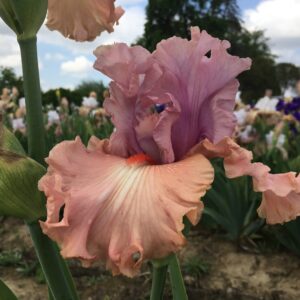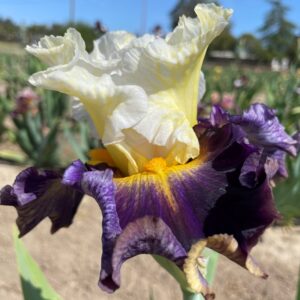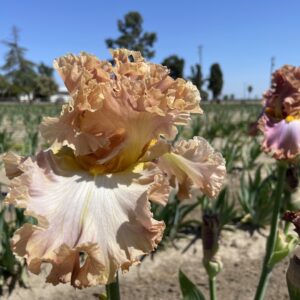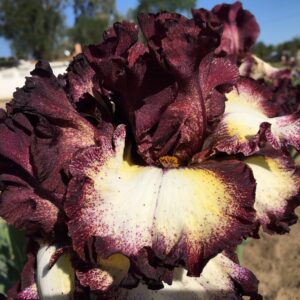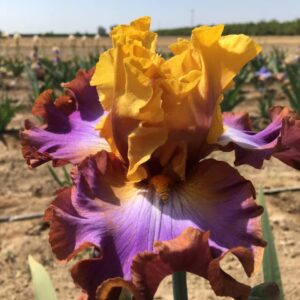When you receive your order, you will notice that the leaves are attached to a thick, modified stem called a rhizome. The roots grow from the bottom of the rhizome and the leaves from the top. The Tall Bearded Iris is one of the hardiest perennials and also one of the easiest to grow. The Bearded Irises are native to cold winter areas of Europe and therefore can be grown anywhere in the United States as long as one follows the simple cultural instructions below. For very little investment of time and energy you will receive years of gardening satisfaction.
When planting the iris, the top of the rhizome should be right at the surface of the soil in warm winter areas and about an inch from the surface in cold winter areas. Plant with the rhizome facing south or toward the sun. Be sure there are no pockets of air under the rhizome when you plant…pack the dirt tightly around the roots. Give new transplants a good watering and afterward keep soil moist but not soggy until established. Plant higher instead of deeper.
Directly after planting, irises should be kept consistently moist but never soggy or boggy. In the West, keep them damp until the winter rains begin and then let the rain take over. After rains stop, keep plants damp but don’t overdo it. In environments with very hot summers it is best to water from below. Watering from overhead allows water to pool in the base of the leaves and can induce rot.
Irises need at least 6-7 hours of direct sunlight daily to ensure good bloom. Irises should be planted in a sunny spot which does not receive heavy shade especially in the spring when flower stalks are coming up. For good display, stalks should grow erect. Shade at the wrong time of year will cause stalks to bend trying to grow into the light. Full sun is advised in any climate.
Irises require a neutral soil (7.0pH) or as close to neutral as possible. The soil must have good drainage. Water should never stand around the base of the plants as this causes rot. The soil should have a good amount of organic matter to ensure good drainage and to help retain moisture. A rich loam is ideal. Clay soils and sandy soils can be built up easily using compost, leaf mold, and or peat moss. Be sure all amendments are well composted. Fresh manure should never be used. In areas with poor drainage, simply build up flower beds a few inches.
Irises are heavy feeders and require fertilizing about three times a year using a balanced fertilizer such as a 6-6-6 or 10-10-10 combination. Never give irises a high nitrogen fertilizer such as 30-10-10. You should incorporate fertilizer into the soil when you prepare it for planting, using 2 tbs of bonemeal per plant. Fertilize again in early spring and again directly after bloom. If need be, any good rose fertilizer will suffice, but never a camellia or rhododendron fertilizer.
Irises should be planted and divided in midsummer for best results. Ideally, irises should be divided at least every three to four years. Dig out old clump, remove soil, and cut back leaves to about 6-7 inches. Using a knife cut off larger rhizomes from other sections. Hose off the divisions. To destroy any undesirable soil bacteria, soak rhizomes, leaves and all for about and hour in a mild solution of chlorine bleach: ¼ cup chlorine to 1 gallon of water. Shake excess water from inside the fan of leaves and allow to dry thoroughly in a cool spot with good air circulation. Dry for one-two days to allow cut areas to heal.
Very little care is needed. Remove old leaves when they pull away without resistance. Cut back bloom stalks at ground level. Weed around plants to provide good air circulation. Be sure not to nick or otherwise injure rhizome.

